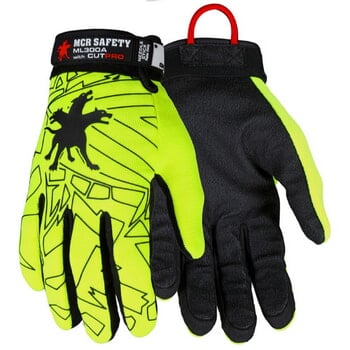Personal Protective Equipment

A Comprehensive Guide to Choosing the Right Work Gloves
In various industries and job roles, safety gloves are vital to personal protective equipment (PPE) that safeguard your hands from potential hazards. However, selecting the correct safety gloves can be complex, as different materials and designs cater to specific job requirements. This comprehensive guide will help you make informed decisions when choosing the right safety gloves for your job, ensuring comfort and protection.
Identify Hazards and Risks
Before choosing safety gloves, assessing the hazards associated with your job is crucial. Consider factors such as chemicals, sharp objects, extreme temperatures, and potential impact. This assessment will guide your glove selection process
Material Matters
Different materials offer varying degrees of protection and dexterity. Common safety glove materials include:
- Nitrile: Resistant to chemicals, oils, and abrasions. Suitable for tasks involving chemicals and hazardous materials.
- Latex: Provides good grip and dexterity. Best for tasks involving biological hazards and mild chemicals.
- Leather: Offers excellent durability and protection against abrasions. Ideal for tasks involving heavy machinery or rough surfaces.
- Cut-Resistant Fiber: Designed to protect against cuts and lacerations. Suitable for tasks involving sharp objects or machinery.
Choose the Right Type of Gloves
There are various types of safety gloves, each designed to address specific needs:
- Disposable Gloves: For short-term tasks, these gloves are suitable for tasks involving chemicals, food handling, and healthcare.
- Mechanical Gloves: These gloves provide protection against abrasions, impacts, and vibrations. They’re suitable for construction, automotive work, and heavy machinery operations.
- Chemical-Resistant Gloves: These gloves are designed to shield against exposure to chemicals, acids, and corrosive materials.
- Heat-Resistant Gloves: Heat-resistant gloves are essential if you’re working in high-temperature environments, such as welding or glass manufacturing.
.
Consider Comfort and Fit
Safety gloves should fit snugly but not too tight, allowing for dexterity and movement. Gloves that are too loose can interfere with tasks and pose safety risks.
- Try Before You Buy: If possible, try on different sizes and styles of gloves before purchasing to ensure a proper fit.
- Consider Lining: Lined gloves offer extra comfort and insulation, making them suitable for cold weather conditions.
Ergonomics and Grip
Consider the tasks you’ll be performing and the grip requirements. Some gloves feature enhanced grip surfaces or patterns that improve handling.
Textured Palm: Gloves with textured palms provide a better grip on tools and materials, reducing the risk of accidents.
Assess Durability and Lifespan
The durability of gloves depends on factors such as the material’s resistance to wear and tear, the intensity of tasks, and the frequency of use.
Reusability: Determine if gloves can be reused or if they are designed for single-use applications.
Compliance with Standards
Ensure that the gloves you choose comply with relevant safety standards in your industry. This indicates that they’ve undergone testing and are approved for specific types of protection.
Test and Evaluate
Test a pair of gloves during a non-hazardous task to assess comfort, fit, and overall suitability before using them for more challenging tasks.
Selecting the right safety gloves for your job requires careful consideration of various factors, including hazards, materials, fit, and specific job requirements. By following this comprehensive guide, you can make informed decisions that protect your hands and enhance your comfort and performance while on the job. Remember, investing in high-quality safety gloves is an investment in your well-being and productivity.